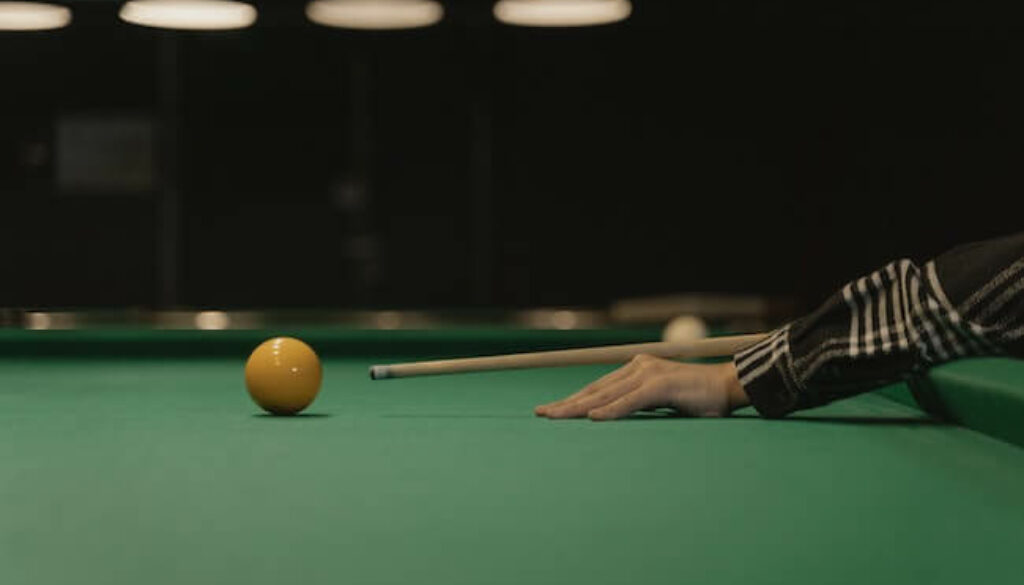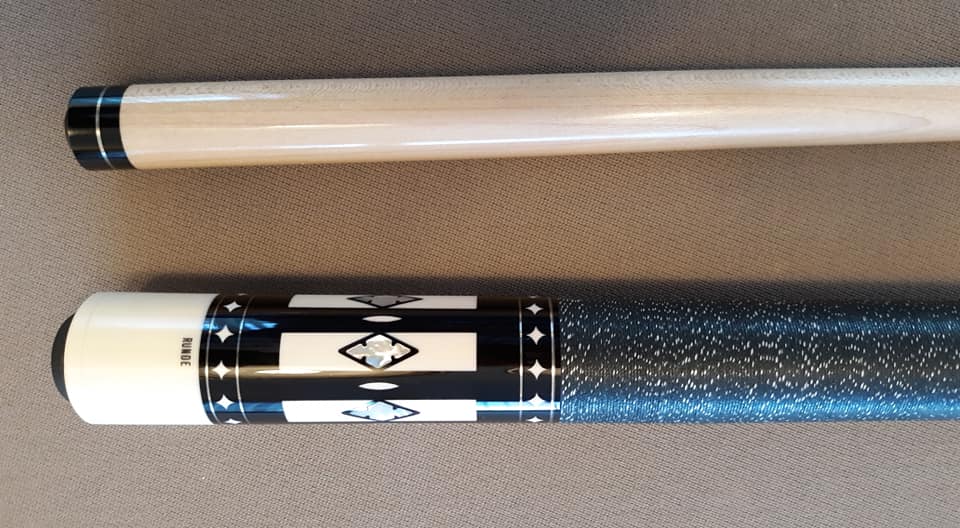Imagine this: you're standing at the edge of the pool table, eyes locked on the cue ball, ready to make that perfect shot. But then, your cue shaft betrays you, sending the ball off course due to unwanted deflection. Sound familiar? If you're a serious player, it's time to dive into the world of low deflection pool cue shafts. These shafts can be a game-changer, turning near-misses into precision shots. In this guide, we'll break it all down for you.
Now, before we get into the nitty-gritty, let's talk about why low deflection shafts matter. Picture this: you've spent hours honing your skills, perfecting your stance, and mastering your aim. But all that hard work goes to waste if your equipment doesn't cooperate. Low deflection pool cue shafts are designed to minimize cue ball deflection, ensuring your shots are as accurate as possible. It's like upgrading your car's tires for better handling—only in this case, it's your pool game that gets the boost.
This guide isn't just for beginners; it's for anyone who wants to take their game to the next level. Whether you're a casual player looking to step up your game or a tournament pro fine-tuning your equipment, you'll find something valuable here. So, grab a drink, sit back, and let's explore everything you need to know about low deflection pool cue shafts.
Here's a quick overview of what we'll cover:
- What is Low Deflection in Pool Cue Shafts?
- Why Does Low Deflection Matter for Serious Players?
- Types of Low Deflection Pool Cue Shafts
- Top Brands for Low Deflection Shafts
- Choosing the Right Shaft for Your Game
- Maintenance Tips for Your Shaft
- The Impact of Low Deflection Shafts on Your Game
- Common Mistakes to Avoid
- Cost Considerations and Budget Tips
- Final Thoughts and Next Steps
What is Low Deflection in Pool Cue Shafts?
Low deflection pool cue shafts are engineered to reduce the amount of cue ball deflection—or "squirt"—that occurs when you strike the cue ball off-center. In simpler terms, they help your shots stay true, even when you're using sidespin or hitting the ball at an angle. Traditional shafts can cause the cue ball to move slightly off its intended path, leading to missed shots and frustration.
Deflection happens because the cue tip makes contact with the cue ball, creating a force that pushes the ball in a slightly different direction. Low deflection shafts are designed with advanced materials and technology to counteract this effect, ensuring your shots are as precise as possible. It's like having a GPS for your pool game—your shots will always hit their mark.
Some of the key features of low deflection shafts include:
- Thinner tips for reduced contact area
- Advanced materials like graphite or carbon fiber
- Specialized taper designs to enhance control
How Does Deflection Affect Your Game?
Deflection can have a significant impact on your performance, especially if you're playing at a competitive level. Even the slightest deviation can mean the difference between sinking a ball and missing entirely. Imagine lining up the perfect shot, only to watch the cue ball veer off course. Frustrating, right? Low deflection shafts help eliminate this issue, giving you more confidence in your shots.
Why Does Low Deflection Matter for Serious Players?
For serious players, every shot counts. Whether you're practicing or competing in a tournament, having reliable equipment is crucial. Low deflection shafts offer several advantages that can elevate your game:
- Improved accuracy: With less deflection, your shots will land exactly where you aim them.
- Enhanced control: You'll have better command over spin and angle shots.
- Consistency: Low deflection shafts help you maintain consistency, even under pressure.
Think of it this way: if you're a golfer, you wouldn't use a club that sends the ball veering off course. The same principle applies to pool. Investing in a quality low deflection shaft is like upgrading your golf clubs—it gives you the tools you need to succeed.
Do You Really Need a Low Deflection Shaft?
Not everyone needs a low deflection shaft, but if you're serious about improving your game, it's definitely worth considering. Casual players might not notice the difference, but for those who play regularly or compete, the benefits are undeniable. It's all about finding the right balance between cost, performance, and personal preference.
Types of Low Deflection Pool Cue Shafts
Not all low deflection shafts are created equal. Different manufacturers use various materials and designs to achieve the desired effect. Here are some of the most common types:
- Graphite Shafts: Known for their durability and resistance to wear, graphite shafts are a popular choice among professionals.
- Carbon Fiber Shafts: Lightweight and strong, carbon fiber shafts offer excellent performance and are often used in high-end cues.
- Wood Composite Shafts: Combining traditional wood with modern materials, these shafts provide a balance of feel and performance.
Each type has its own advantages and drawbacks, so it's important to consider your playing style and preferences when making a choice.
Which Material is Best for You?
Your choice of material will depend on factors like budget, playing style, and personal preference. For example, if you prioritize durability and don't mind a slightly heavier shaft, graphite might be the way to go. On the other hand, if you value a lighter, more responsive feel, carbon fiber could be the better option.
Top Brands for Low Deflection Shafts
When it comes to low deflection pool cue shafts, some brands stand out from the crowd. Here are a few of the top contenders:
- Spyder: Known for their innovative designs and exceptional performance, Spyder shafts are a favorite among professionals.
- Prior: Prior shafts are renowned for their precision and reliability, making them a solid choice for serious players.
- Jump: Jump offers a range of affordable yet high-quality shafts that deliver excellent results.
These brands consistently deliver products that meet the needs of serious players, so you can't go wrong with any of them. Just remember to do your research and read reviews to ensure you're getting the best shaft for your game.
Why Trust These Brands?
These brands have earned their reputations through years of experience and dedication to quality. They invest heavily in research and development, ensuring their products meet the highest standards. Plus, they often collaborate with professional players to refine their designs, giving you confidence that you're getting a top-notch product.
Choosing the Right Shaft for Your Game
Selecting the right low deflection shaft can be a daunting task, especially with so many options on the market. Here are some tips to help you make the right choice:
- Consider your playing style: Are you more of a power player or a finesse player? This will influence the type of shaft you need.
- Think about your budget: High-end shafts can be expensive, but there are plenty of affordable options that still deliver great performance.
- Test before you buy: Whenever possible, try out different shafts to see which one feels best in your hands.
Remember, the perfect shaft for one player might not be the best fit for another. It's all about finding what works for you.
What to Look for When Testing Shafts
When testing shafts, pay attention to factors like weight, balance, and feel. A shaft that feels great in the store might not perform as well on the table, so it's important to take your time and make an informed decision. Don't be afraid to ask for advice from more experienced players or store staff—they can offer valuable insights to help you choose the right shaft.
Maintenance Tips for Your Shaft
Once you've invested in a quality low deflection shaft, it's important to take care of it to ensure it lasts as long as possible. Here are some maintenance tips to keep your shaft in top condition:
- Regularly clean the shaft with a soft cloth to remove dirt and oils.
- Avoid exposing the shaft to extreme temperatures or humidity.
- Store your cue in a protective case when not in use.
By following these simple steps, you can extend the life of your shaft and maintain its performance. Think of it like taking care of your car—regular maintenance will keep it running smoothly for years to come.
Common Shaft Care Mistakes
One common mistake players make is neglecting to clean their shafts regularly. Dirt and oils can build up over time, affecting the shaft's performance. Another mistake is leaving the cue in direct sunlight or near a heat source, which can cause the materials to warp or degrade. Avoid these pitfalls by staying vigilant and giving your shaft the care it deserves.
The Impact of Low Deflection Shafts on Your Game
The effects of switching to a low deflection shaft can be dramatic, especially if you're coming from a traditional shaft. Players often report improvements in accuracy, control, and consistency, leading to better overall performance. It's like putting on a new pair of glasses—you suddenly see things more clearly and can make better decisions.
But don't just take our word for it. Studies have shown that players who switch to low deflection shafts experience significant reductions in shot errors, particularly when using sidespin or hitting the ball at an angle. These improvements can translate to more successful shots and higher scores, making the investment well worth it.
Real-World Examples
Many professional players have credited low deflection shafts with helping them achieve success on the tournament circuit. By eliminating unwanted deflection, they're able to focus on their technique and strategy, rather than worrying about equipment issues. It's a testament to the effectiveness of these shafts and their ability to enhance performance.
Common Mistakes to Avoid
Even the most experienced players can fall into bad habits when it comes to choosing and maintaining their equipment. Here are some common mistakes to avoid:
- Buying a shaft based solely on price: Cheaper isn't always better—quality should always be your top priority.
- Not testing before purchasing: Trying out different shafts can help you find the one that feels best for your game.
- Ignoring maintenance: Neglecting your shaft can lead to decreased performance and a shorter lifespan.
By avoiding these mistakes, you'll be well on your way to getting the most out of your low deflection shaft.
How to Avoid These Mistakes
The best way to avoid these pitfalls is to educate yourself about the options available and take the time to test and maintain your equipment properly. Don't rush the decision-making process—your game depends on it.
Cost Considerations and Budget Tips
Low deflection shafts can vary widely in price, depending on factors like brand, material, and design. While high-end shafts can be expensive, there are plenty of affordable options that still deliver excellent performance. The key is to find a shaft that fits both your budget and your playing style.
Here are some tips for staying within your budget:
- Set a budget before you start shopping.
- Look for sales or discounts on high-quality shafts.
- Consider purchasing a used shaft from a trusted source.
Remember, you don't have to break the bank to get a great shaft. With a little research and patience, you can find a shaft that meets your needs without emptying your wallet.
Final Thoughts and Next Steps
In conclusion, low deflection pool cue shafts are a


